If you follow me on Instagram, you’ve seen sneak peeks of a really intense embroidery project I’ve been working on. Stage I, the embroidery part, is complete, so I thought I’d share a bit about it before I move into Stage II, quilting!
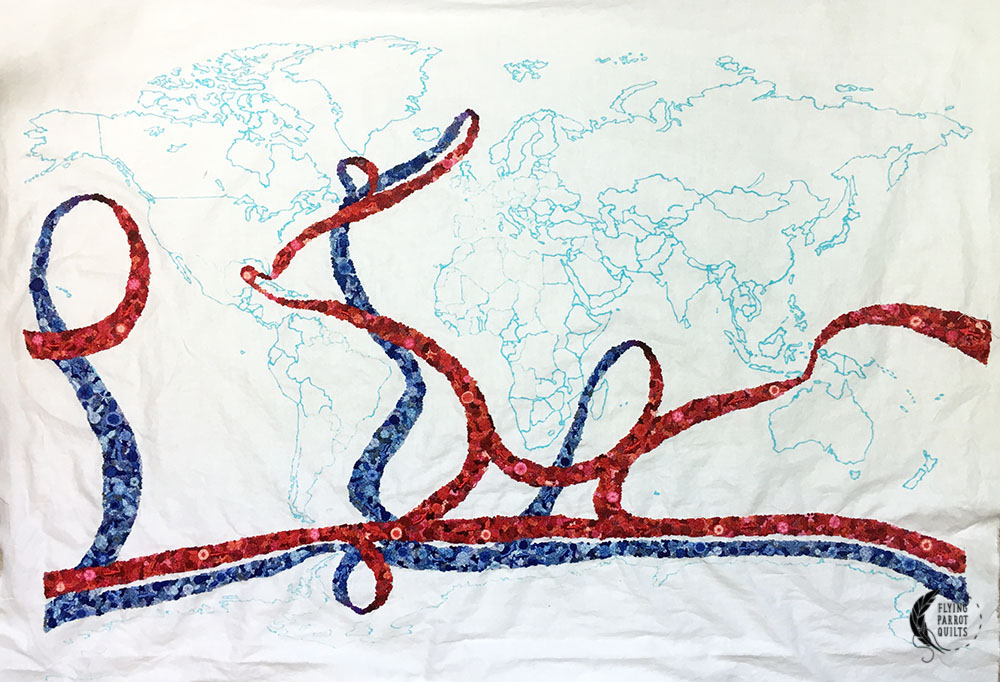
Some years ago, I made a small mini quilt inspired by the thermohaline circulation of the oceans. This is large scale, long term ocean circulation in which warm water from the surface cools, sinks, moves along the sea floor, and eventually comes back up to the surface.
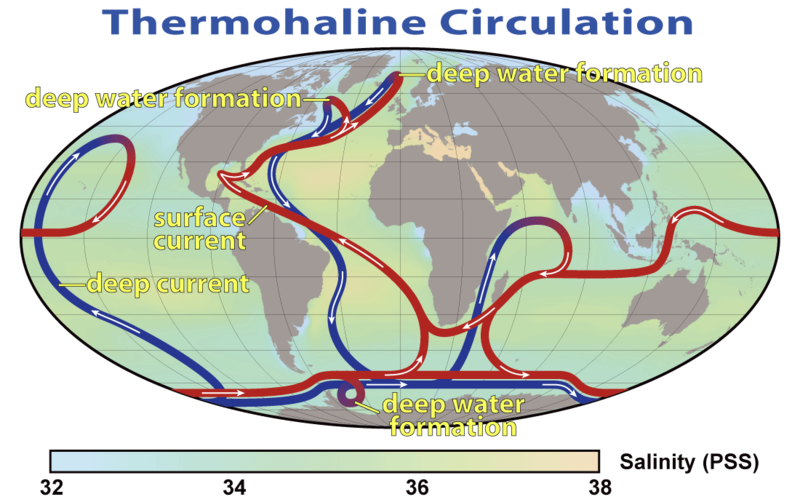
It’s a really neat process, but I never was satisfied with the mini quilt I made—it was before I really developed a modern style, and because I used a printed map fabric, the thread painted embroidery just disappears, particularly the blue.
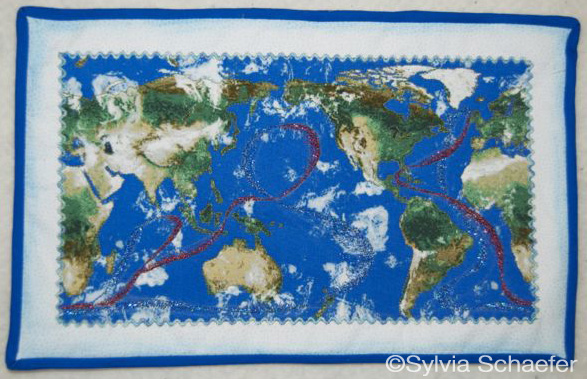
The mini quilt I made years ago
I always wanted to revisit making a quilt inspired by this, but it wasn’t until recently that an idea on how to make a larger and more modern quilt popped into my head after I went down a hand embroidery rabbit hole on Instagram.
First, I printed out a world map and traced it onto white fabric with a water-soluble marker, then drew in the circulation.
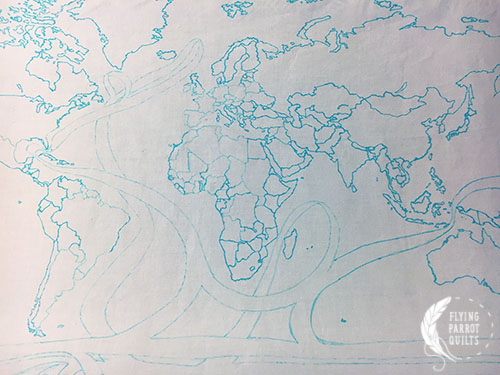
And then I filled in all the paths with a combination of wheel roses, lazy daisies, and French knots. French knots for days. Thousands of them. I was really bad at French knots when I started this. I can do them in my sleep now.
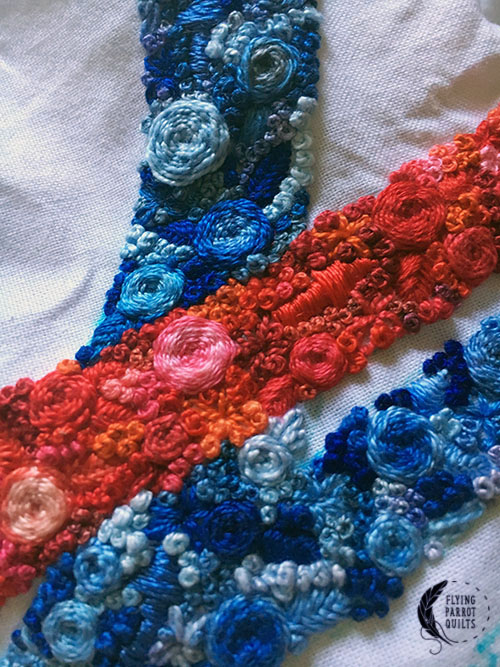
I also added in arrows using satin floss to show the direction of the water movement. When starting a new section, I’d usually start with those.
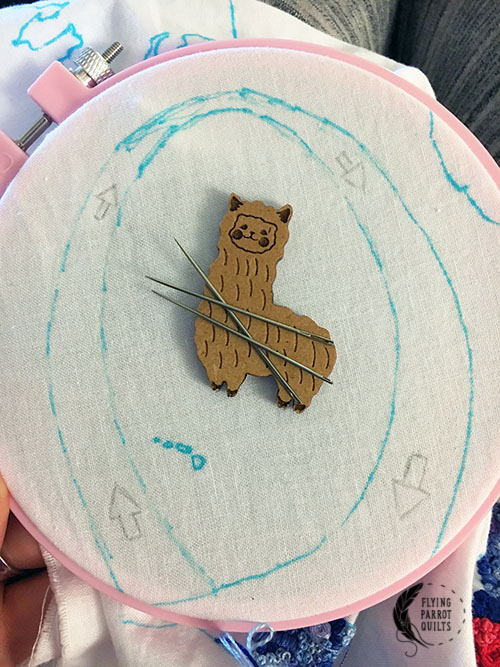
I marked them using a pencil or a disappearing fabric marker, and stitched them. Red is surface water, and blue is deep water.
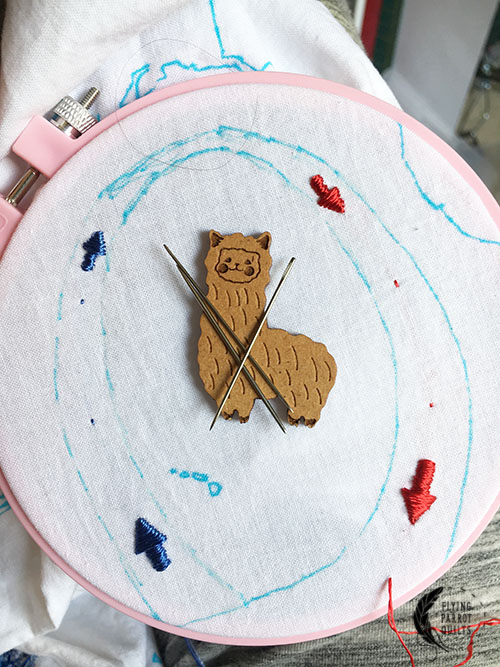
In this loop, the cold water from the ocean bottom rises to the surface, so where there was a changeover between surface water and deep water, I used some purple threads to grade between the blue and the red.
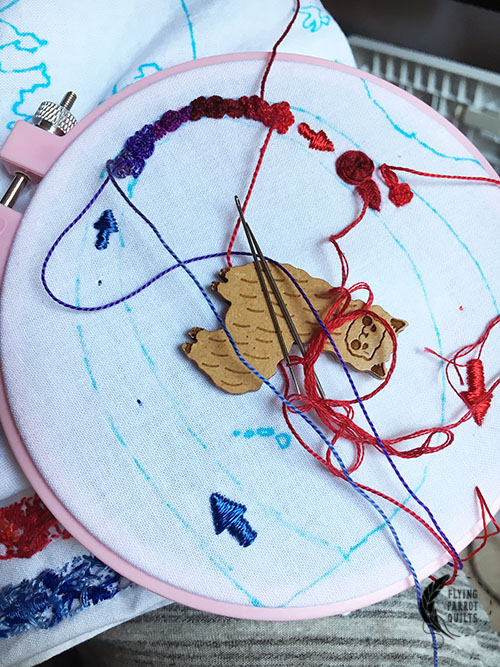
Then I’d mark out where the wheel roses would go and stitched those before filling in with french knots.

There was usually a big tangle of threads going on at any one time so I could mix up the colors nicely.
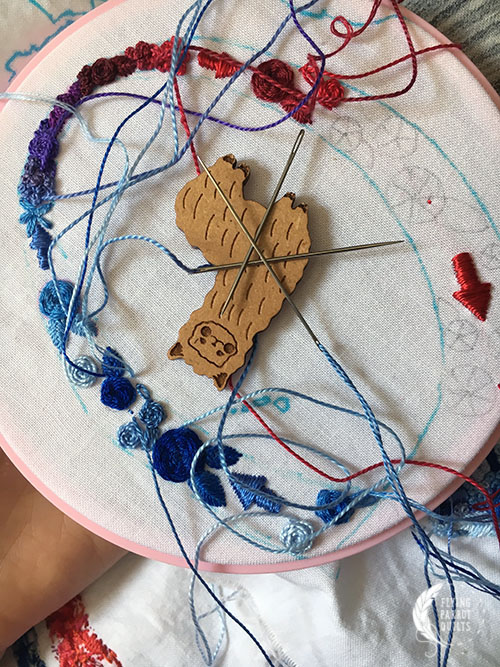
My llama needle holder got a real workout.
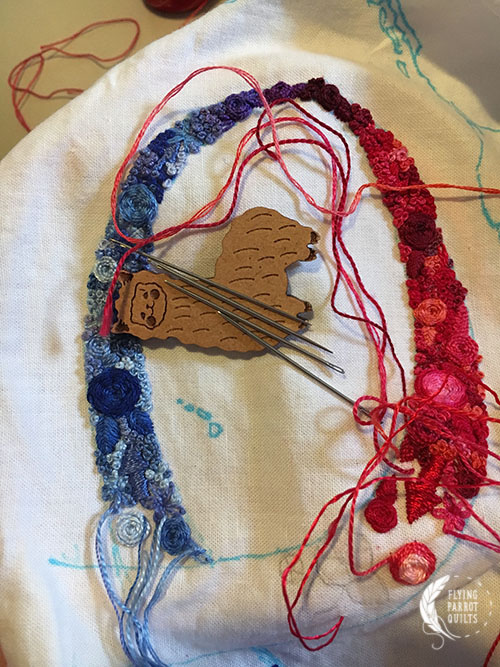
This is what the bucket of threads looked like
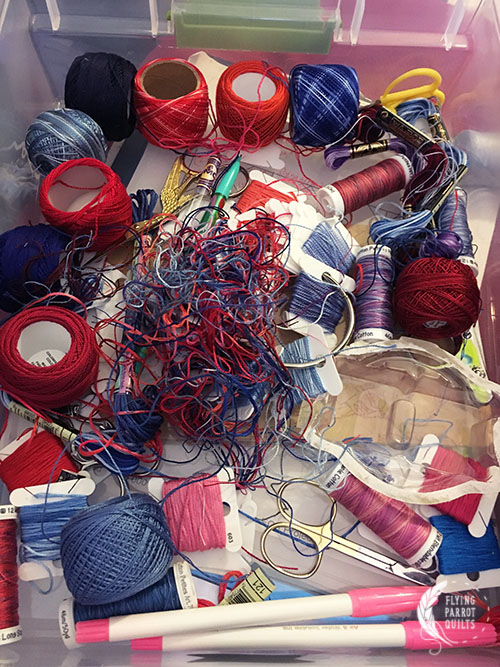
Here are some more detail shots of interesting parts of the ocean!
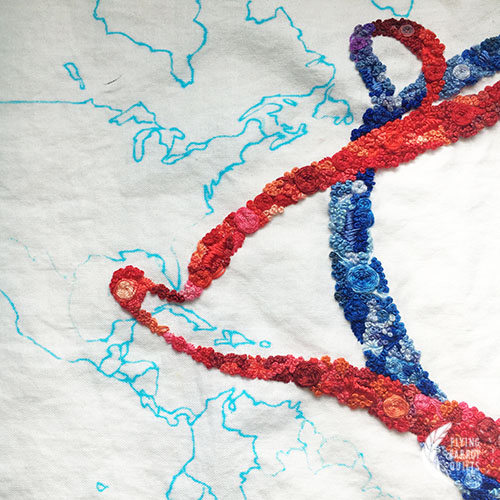
Gulf Stream & North Atlantic
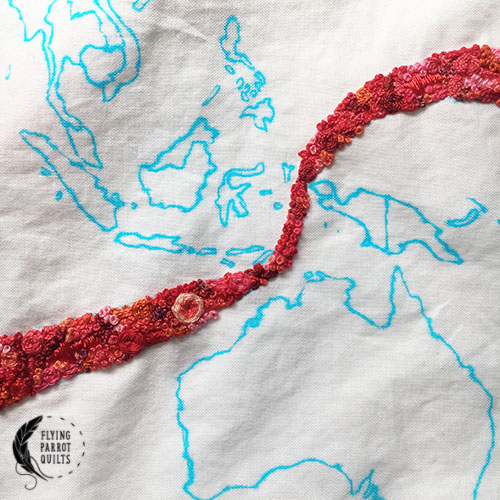
Indonesian throughflow
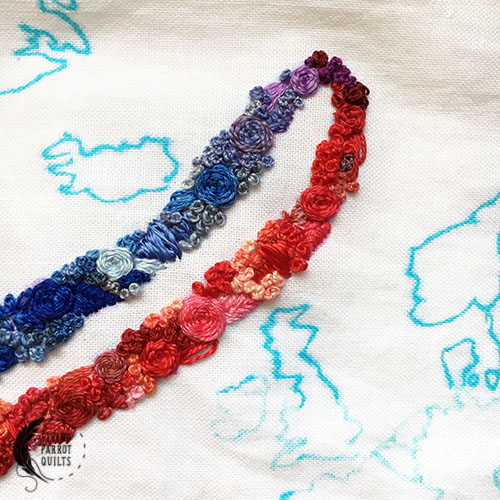
North Atlantic Deep Water formation
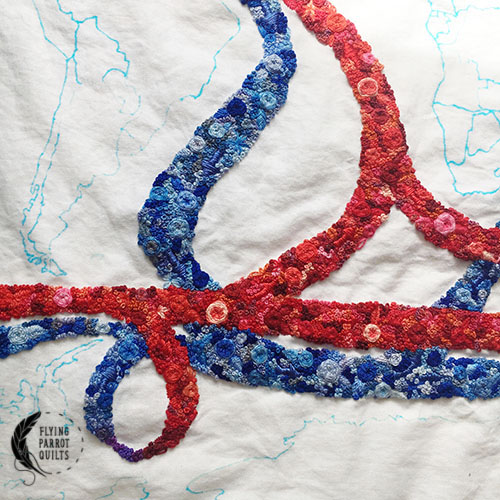
Antarctic Bottom Water formation
SaveSave
I imagine you’re wondering what’s going to happen with the continents. You’ll have to stay tuned!
Embroidery Stats:
- Map size: 20″ x 30″
- Circulation paths: ~ 160 inches of embroidery
- 1 inch of embroidery: ~ 50-60 minutes, so my best estimate is that this took between 130-150 hours.
- Threads used:
- 8 wt perle cotton: House of Embroidery, Wonderfil, DMC, & Iris
- 12 wt perle cotton: Valdani
- 12 wt cotton threads: Aurifil and Sulky
- Floss (cotton & satin): DMC
- French knots: ~50/inch => 8,000 total french knots
- Wheel roses: 2-3/inch => 400 total wheel roses


WOW!! I love it all and can’t wait to see the finished project.
This is absolutely incredible!!!!! The mind boggles at all the French knots, and it’s just amazing! Can’t wait to see what you have planned for the continents.
Congratulations on your patience! Now for the continents — do the oceans stay white? Very interesting pattern, I like it. 🙂
This is stunning, Sylvia, and I am fascinated to see how it continues to develop. It was fun to follow on IG but I definitely love getting more in depth information all at once in this blog post. You have put a lot of time into this; when did you work on it? At night, during the day (all the time)??
This is such a wonderful project Sylvia! The piece should be seen by many people once finished I think.
WOW! I have to say that is some amazing embroidery work!!! So many hours!!! Well, I’m glad it’s you doing it, not me: it would never get finished!! 😀 Looking forward to your work on the continents! Hugs, H
This is amazing. I’ve been loving seeing it pop up on Instagram and I’m glad I finally came to your blog (somehow I wasn’t subscribed to it before, but that’s now fixed) to see more about the process. I’m so excited to see your final product!